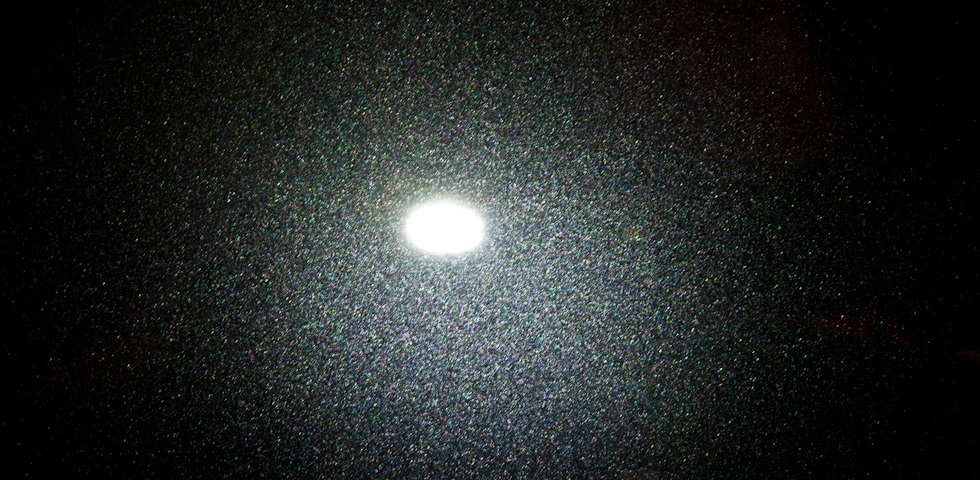Recently I shared the video below on social media. In the video, I polished half of a very swirled, etched, and worn-out clear bra on a BMW X5. I thought it would be a great topic for an AAP article after receiving a few inquiries about the process I used, so here we go!
50/50 Video of PPF polishing
Let me first start out by saying that having to polish PPF is probably one of my least favorite tasks in detailing. Today’s film installers seem to love using pre-cut films and leaving visible edges all over vs. wrapping the panel edge. This means we detailers have to either tape the edges off prior to polishing, or polish over them and then clean the edges afterwards, which is time consuming and tedious. PPF also doesn’t respond to polishing quite like paint does and you are more limited as to how aggressive you can get with polishing due to how thin the top coat is (typically .5 mil). It is important to note that most film manufactures recommend against polishing their film and advise that doing so can void the warranty. While I understand the reasoning behind this recommendation, you really don’t have many options once swirls start appearing in non self-healing films. In fact, when the film is as far gone as the one in my video, you really have nothing to lose and the only way to improve it is with polishing. In all honesty, the film in my video should have been replaced but wasn’t in the owners budget at the time. Polishing greatly improved the look at a small fraction of the cost to replace.
Polishing Paint Protection Film
Polishing PPF is similar to paint in that each manufacturer’s film is different and you really don’t know how it’s going to respond until you try it. Just like paint, it’s always suggested that you do a test spot and start with the least aggressive method. I can remember polishing film as far back as the early 90’s and while I’ve never had a film I couldn’t improve, there have been a few that were pretty fussy. While you can use just about any polish available, over the years my most consistent results have come from using Menzerna polishes on the rotary polisher with various foam pads. The DA can be used as well but I prefer the rotary in most cases, as you can polish with more precision and it allows you to “polish off the edge” should you choose not to tape off the film edges.
As far as pad/polish selection goes, I would avoid using anything too aggressive, especially on the pad side. I feel aggressive pads like microfiber or wool tend to haze the film, resulting in more difficulty bringing it back to a high gloss. The foam LC Hydro pads have worked well for me over the years, though most any foam pad will work.
For edges, I would suggest taping them off when you’re just dealing with light swirls, but in the instance of the film in my video there would have been a noticeable difference where it was taped off. For that film, you can see I taped the film off to polishing the paint itself. After finishing the paint, I removed the tape and then I polished the film with the rotary and polished “off the edge” of the film. This involves tilting the pad slightly so that the leading edge of the pad polished off the film and the trailing edge of the pad is lifted off the surface so it doesn’t cut into the film. Other than that, I suggest keeping speeds lower and avoid getting the film too hot as it can be burned. I would also suggest that you clean polish residue from the edges immediately after polishing, not allowing it to dry. This means removing the tape right away or cleaning the edge if you choose to polish over it. There are many ways to clean the film edge but I prefer to use my fingernail wrapped with a MF towel. If you’re dealing with dried polish or wax on the edge I find that a MF towel with some Hyper Polish works well to help remove it…”like removes like”.
Care After Polishing
Once the film is corrected, I like to use products to protect it that also won’t leave residue on the film edges. A few recommendations are products like Optimum Opti-Seal, Blackfire Crystal Seal, or even spray sealants/coatings like CarPro Reload and Gtechniq C2v3 Liquid Crystal. However, the best option, in my opinion, is to apply an actual coating like Optimum Gloss-Coat. In this instance Optimum Hyper polish would be a good option to polish or finish, because a simple ONR wipe-down after polishing is all that should be needed for prep prior to applying the Gloss-Coat.
Thanks for taking the time to read my article and don’t hesitate to ask any questions!
Buy Products From This Article
Related Posts
- Detailing Projects: Ferrari 488 Pista #2 Paint Correction, Clear Bra, & Ceramic Coating
- Detailing Projects: Ferrari 488 Pista Paint Correction, Clear Bra, & Ceramic Coating
- Projects | Land Rover Defender 90 | Correction | Clear Bra | Coating
- Projects: Lotus Evora GT, Paint Correction, Clear Bra, Ceramic Coating
- The Ultimate GYEON Detail: Plum Crazy Hellcat
